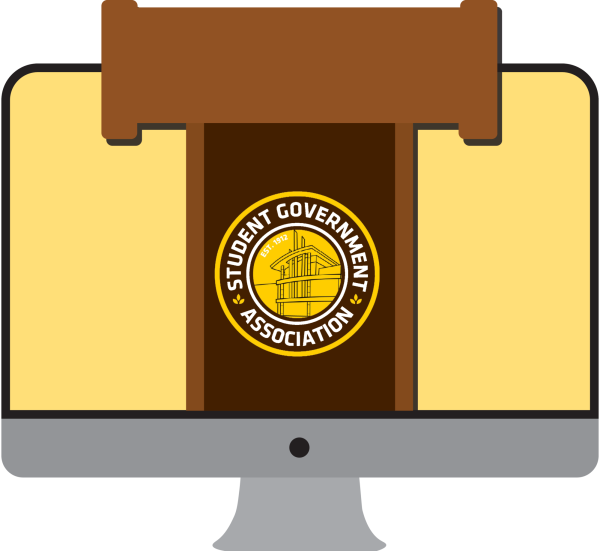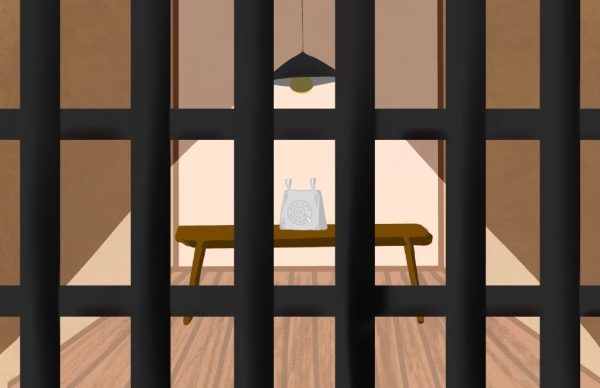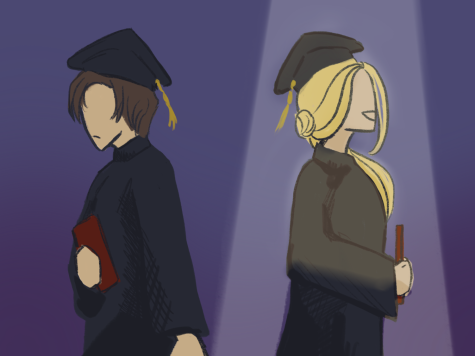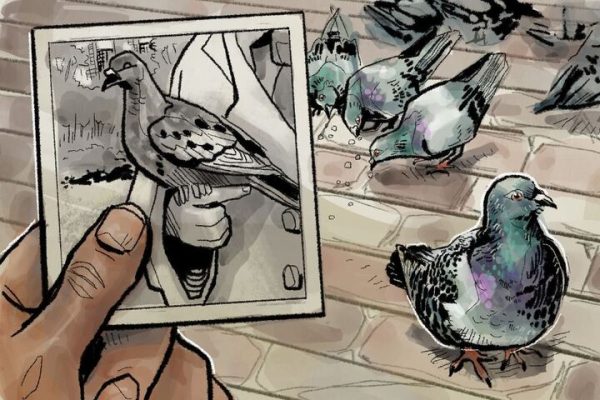It’s time for the administration to step out of the shadows
It’s been a year since university alumni and donors reacted to student government’s changes to the Harvey D. Grace Memorial Chapel — causing a national stir and accusations of a “Muslim Takeover” at Wichita State — but a virtual tour of the university projects a completely different image.
In each photograph of the inside of the chapel, the pews gleam in the soft light, the altar stands mute at the end of the aisle, as if nothing ever happened.
Whether simple negligence or intentional deception by the university, this conflict — between public perception and reality — is a perfect exemplar of the problem at hand.
The university administration wants to project an image of being inclusive. But at the first sign of trouble, the first test of conviction, they showed they weren’t willing to stand up for being inclusive if it involved sacrificing money from upset donors.
In the spring of 2015, student government — with the approval of President John Bardo — removed the pews and an altar from the chapel to make the space more flexible for students of all faiths, part of the stated intent of the chapel in the first place.
Six months later, people from off campus took to Facebook in a very public display of disagreement. The university immediately went into damage-control mode.
In response to the backlash, Bardo said in a statement that he didn’t think the changes were “undertaken with enough consideration of the feelings of all elements of the campus and broader community.”
That form of extortion, pandering to the loudest voices, that we-won’t-give-money-if-you-don’t-do-as-we-say attitude — and the fact it was rewarded — doesn’t bode well for a university with so many growing external interests.
It should have been handled differently. Students felt left out of the discussion, betrayed or worse.
But now the student government association has asked that further changes be made to the chapel. President Bardo’s executive team agreed.
The leaders of student government are furious.
Why? Because the president’s executive team said changes to the chapel will not be funded by university money.
And they shouldn’t be.
The Sunflower acknowledges that there’s no perfect way to settle the interfaith prayer space without offending someone.
Removal of the pews and altar left Christian donors concerned by a perceived affront on their religion, Muslim students feeling excluded and targeted, and a well-intended student government association angry at an unresponsive administration.
Someone has to make a decision, provide reasons for that decision and stick to it. That’s part of being a leader. Student government has been vocal and clear in its decision making process. The administration, on the other hand, has neither come out in strong opposition nor in strong support of its students.
The worst possible response from leadership in a time of controversy is silence. It’s bad form.
The administration needs to step out of the shadows and give clear answers why student government’s requests have been denied to use university funding on the Interfaith Prayer Space proposal.
And the President’s answer is an easy answer — one that may be difficult to say at this particular time, but one that needs to be said, nonetheless.
Wichita State University is a public university. State funds should not go to any religious building or activity, no matter how many students want it.
The problem with the chapel, the reason its conversion to a more inclusive interfaith prayer space has been so clumsy, is the blurry line created by the presence of a religious building on state property.
The conflict of interest created by the confluence of religion and state at the chapel was sure to arise at some point. The university’s acceptance of the gift in the first place should have been turned down.
The chapel’s inclusion on state property — like the display of the Ten Commandments outside a courthouse — is wholly inappropriate and incompatible with a country whose founders made the greatest distinction of any government in the history of the world: the separation between church and state.
But now the university is stuck with the chapel. It needs to make a decision. If it is to remain a religious building on state property, it needs to be inclusive of all religions, or draw a hard line that it will not pay for any of its maintenance as long as it’s recognized as a religious building. If concessions need to be made to make it more inclusive, those changes should not be made with university money.
With the rising cost of tuition and the shaky funding from the state, this is no time to spend tuition dollars, student fees or taxpayer dollars on something wholly at odds with our secular state.
If the university wants to come out on the right side of this it needs to maintain strong separations between religion and state, between public and private interests. But for whatever reason, something that should be an easy stance to take at a state school, the side of the Constitution, goes unsaid.
Intention, decision-making processes and justification remain vague, as a way to avoid the problem altogether. It buys time. It delays a permanent solution, conveniently, until some of our student leaders graduate.













